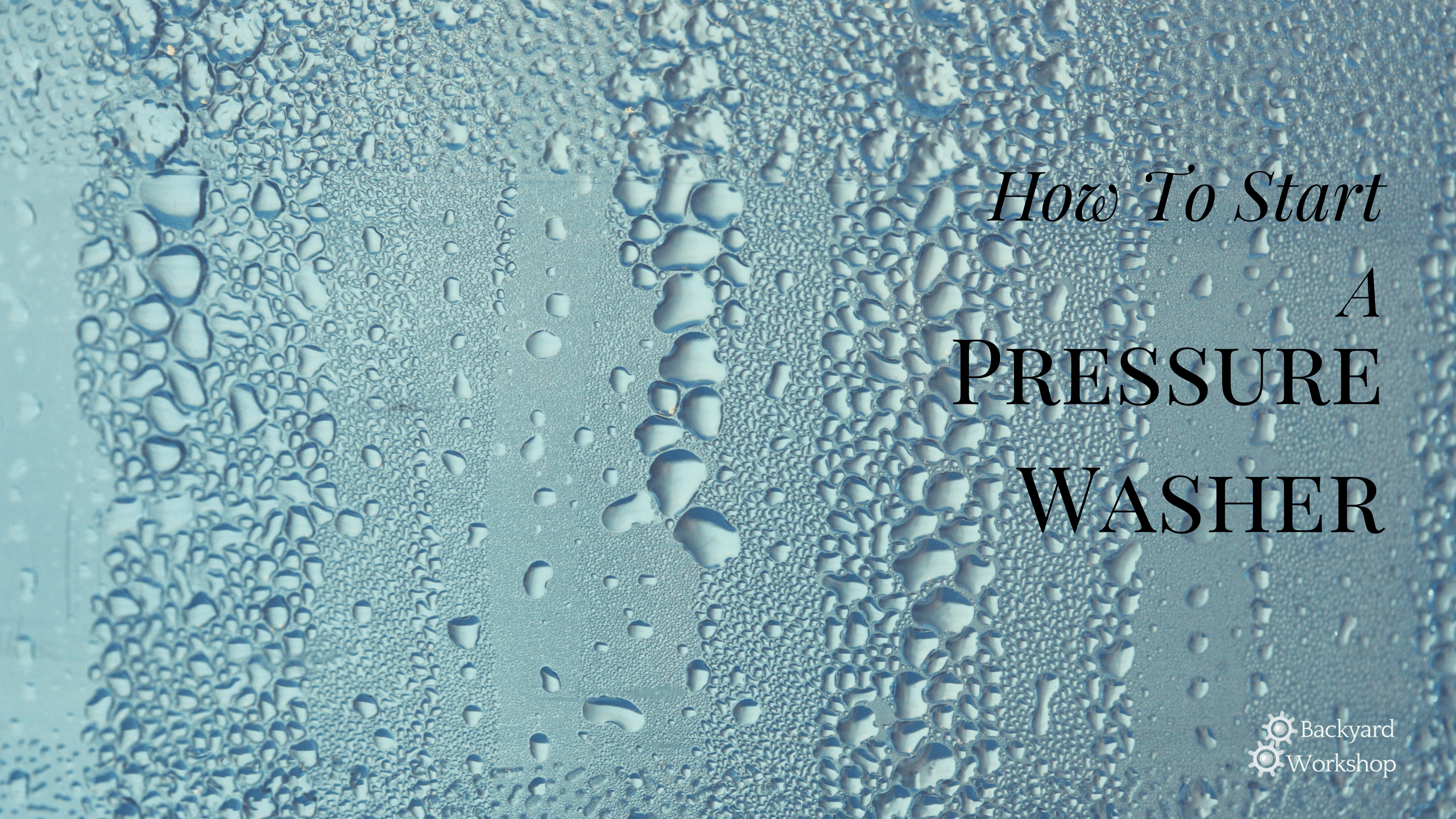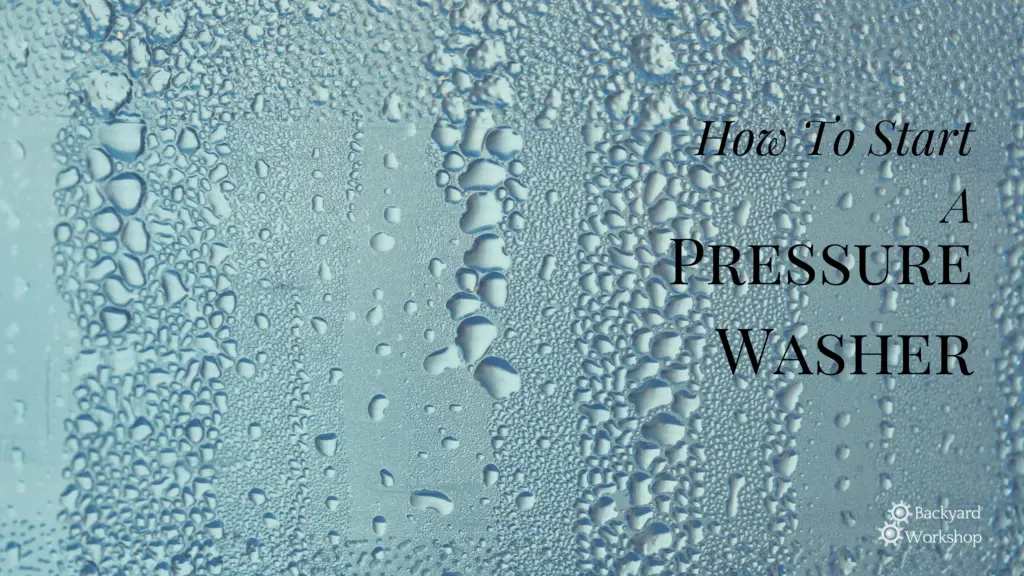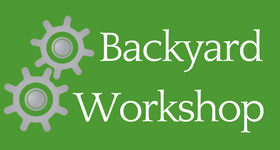How To Start A Gas or Electric Pressure Washer


Although the basic procedure to start a new power washer is the same in most models, it’s always advisable to check the manufacturer’s instructions. The startup process for gas pressure washers and electric power washers differ slightly.
All power washers should stand on a level surface before started. Neither the electric nor the gas pressure washers require any tools to start.
Make sure your power washer is switched off until you are ready to use it.
How To Start An Electric Pressure Washer
Here is a checklist to start your electric pressure washer.
- Ensure the water strainer is clean and free of debris.
- Connect the water inlet hose to the faucet and the other end to the pressure washer.
- Connect the uncoiled high-pressure hose to the pressure water pump. Attach the other end to the gun assembly.
- Select the nozzle you want to use.
- Pull back the collar at the end of the gun and attach the nozzle. Secure the nozzle by releasing the collar.
- Remove excess air in the pressure washer system before you start the motor. Turn on the faucet and allow the water to flow through the system replacing the air by squeezing the gun.
- Connect the power plug to a grounded outlet.
- Turn the motor switch to the “On” position and start using the pressure washer.
When you’ve completed, say, cleaning your gutters with your washer, switch the electric pressure washer off and remove the plug from the outlet. Release the pressure by squeezing the gun after you’ve shut off the pressure washer. Turn off the faucet and disconnect the water inlet and high-pressure hose. Drain excess water and remove the nozzle.
How To Start A Gas Pressure Washer
The initial steps to start the gas pressure washer are similar to the electric power washer.
- Make sure the water strainer is clean.
- Uncoil and connect the two hoses. Connect a garden hose to the faucet and the pressure pump.
- The high-pressure hose connects between the spray gun and the water pump.
- Most models have collar connections on the spray gun that are pulled back to connect and then snaps back into position. Connect the high-pressure hose at the back end of the spray gun and the nozzle at the front collar connection of the spray gun wand.
- Turn on the water. Squeeze the gun trigger to purge the air out of the system as it fills with water.
The gas engine requires additional steps that aren’t necessary with an electric power washer.
- Check the fuel level. Fill the fuel tank with gas according to the manufacturer’s recommendations. The gas power washers have 4-cycle engines and don’t need a fuel-oil mixture.
- Check the oil level. Make sure the fuel valve is in the “Closed” or “Off” position. Remove the dipstick. Wipe it clean and reinsert but don’t screw back in. Check that the oil level is a little above the indication line. Replace the oil if it is a dark oil. Oil should be gold/yellow color.
- Switch the fuel valve to the “Open” or “On” position.
- Move the choke to the “Open” position. In many models, it is to the left.
- Move the throttle to “Full Throttle” or “Max” position (or to the left).
- Turn the motor “On.”
- Release the pressure by squeezing the gun trigger while holding the gun firmly in your one hand. Simultaneously pull the starter grip on the engine with your other hand.
- Let the engine run for a few seconds to warm up.
- Move the choke to the “Close” or “Run” position and start using the gas pressure washer.
After using the pressure washer, switch the engine off. Release the pressure in the system by squeezing the gun trigger. Switch off the water faucet and remove all hoses and attachments. Drain the remaining water in the system.
Safety Tip: Always check the hoses for leaks and repair if needed before you start the pressure washer engine.

